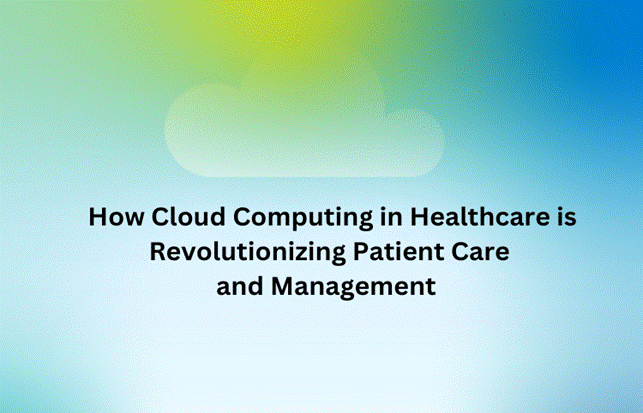Healthcare practitioners are entangled in a web of challenges. Paper records could be more convenient and error-prone. While digital solutions were an upgrade, they were sometimes restricted to certain healthcare facilities, making it difficult for specialists to cooperate and share data efficiently. Professionals, on the other hand, can now profit from Cloud Computing Courses.
Numerous Benefits of Cloud Computing have begun to alter the approach to patient care and management by shifting healthcare data and activities to cloud-based platforms. Join us as we delve deeper into cloud technology with Cloud Computing Courses, helping healthcare workers to appreciate its potential fully and guaranteeing a brighter and more efficient future for healthcare delivery.
Understanding Cloud Computing in Healthcare:
Cloud computing in healthcare refers to the distribution of various services—such as storage, databases, servers, networking, software, analytics, and intelligence—over the internet in order to offer faster innovation, flexible resources, and economies of scale. These services provide secure and efficient processing of patient data as they are specifically tailored to meet the demands of the healthcare industry.
Among the technologies used in cloud computing are Platforms such as Service (PaaS), Software as a Service (SaaS), and Infrastructure as a Service (IaaS). These components allow healthcare providers to choose the level of service they need, ensuring a customized approach to data administration and application development.
Enhanced Data Security and Privacy:
Data security is crucial in healthcare, where patient confidentiality and privacy are non-negotiable. To protect patient data from unknown access and cyber threats, cloud computing delivers robust security features such as data encryption, access controls, and frequent security audits.
Cloud service providers heavily invest in modern security mechanisms. These solutions, which range from robust encryption techniques to multi-factor authentication, safeguard healthcare data at every turn. Frequent security patching and upgrades fortify the defenses, increasing the difficulty of system access for hostile actors.
Cloud computing services in the United States are run by industry-specific regulations such as the Health Insurance Portability and Accountability Act (HIPAA). Compliance with these standards ensures that healthcare practitioners maintain the greatest levels of patient confidentiality and data integrity, avoiding legal complications and increasing patient trust.
Streamlining Patient Records Management:
Cloud-based technology can digitize patient records by transforming paper-based documents into easily accessible electronic files. This modification raises the overall bar for patient care by lowering the risk of data loss, accelerating data retrieval, and improving the accuracy of medical data.
Healthcare staff have real-time access to patient records no matter where they are. A doctor working in an emergency room, a specialist, or a general practitioner can all receive crucial patient data rapidly. Furthermore, cloud-based systems allow for seamless updates, ensuring the accuracy and currentness of medical history at all times.
Facilitating Telemedicine and Remote Monitoring:
Cloud computing-powered telemedicine is revolutionizing the delivery of healthcare. Through virtual visits and video consultations, patients can interact with healthcare experts from the comfort of their own homes. In addition to increasing convenience, this accessibility guarantees prompt medical advice, a crucial benefit for people residing in remote areas.
Real-time vital sign monitoring is made possible by cloud-connected medical devices, giving medical professionals the ability to check on their patient’s health remotely. These devices, which come in a variety of forms (from glucose meters to heart rate monitors), transmit data to safe cloud servers for analysis and subsequent distribution to medical professionals. Early intervention is made possible by this proactive approach to patient care, which lowers issues and hospital stays.
Utilizing Big Data for Healthcare Analytics:
Big data analytics and cloud computing reveal a lot of new insights into healthcare data. Cloud-based analytics tools examine large-scale statistics, looking for patterns, trends, and correlations that assist in guiding healthcare decisions. These insights help medical personnel implement preventive measures, foresee illness outbreaks, and adjust treatment regimens to each patient’s specific needs.
Predictive analytics in the cloud evaluate historical data to identify potential health risks in certain populations. By implementing preventative measures, educating communities, and forecasting disease outbreaks and high-risk populations, healthcare practitioners can decrease the effects of diseases. This preventive method relieves the load on the healthcare system while saving lives.
Conclusion:
The use of cloud computing in healthcare is expected to grow continuously in the future. Cloud Computing Courses, Blockchain technology, and artificial intelligence have the potential to significantly improve the situation by providing increasingly individualized and effective healthcare solutions.










